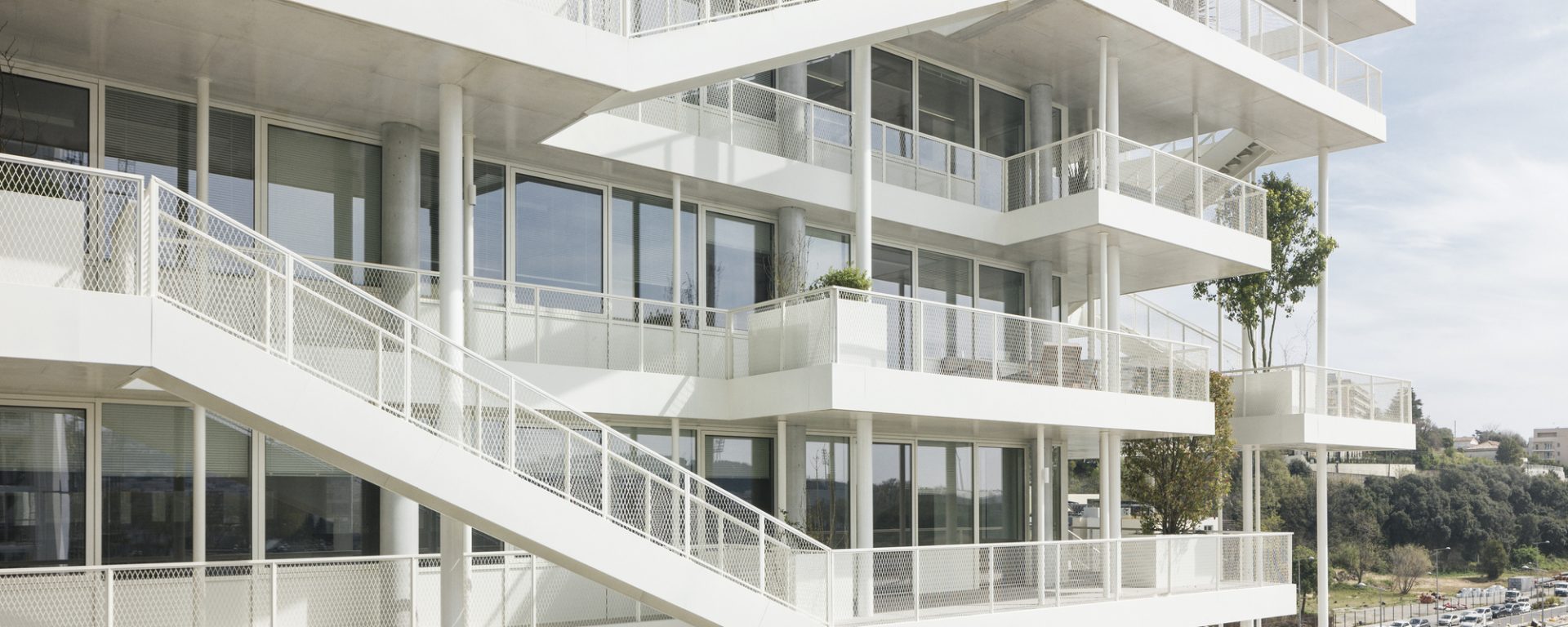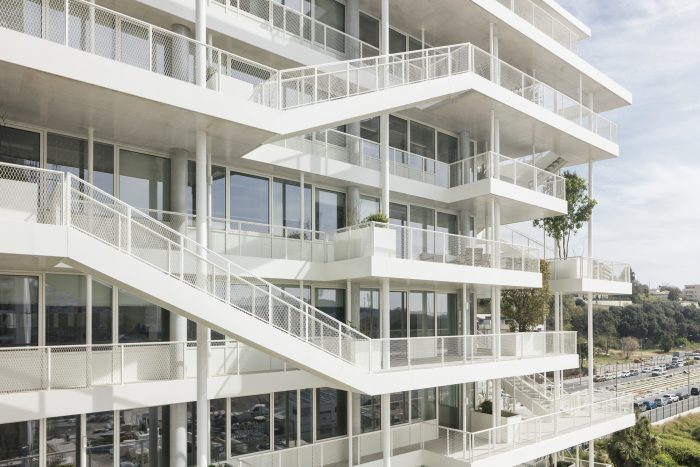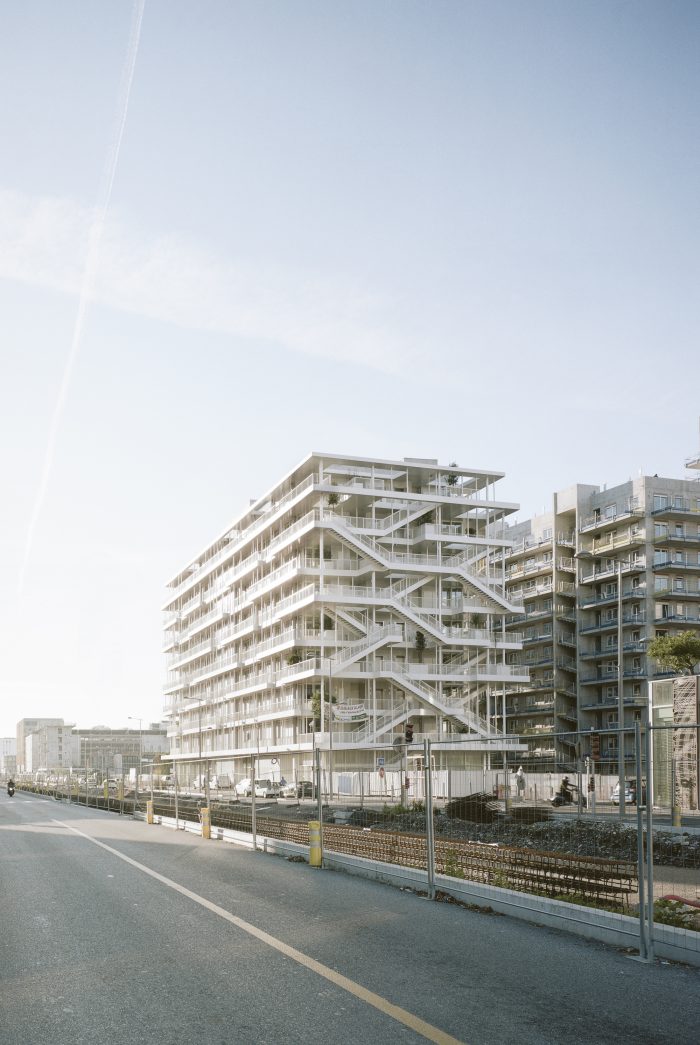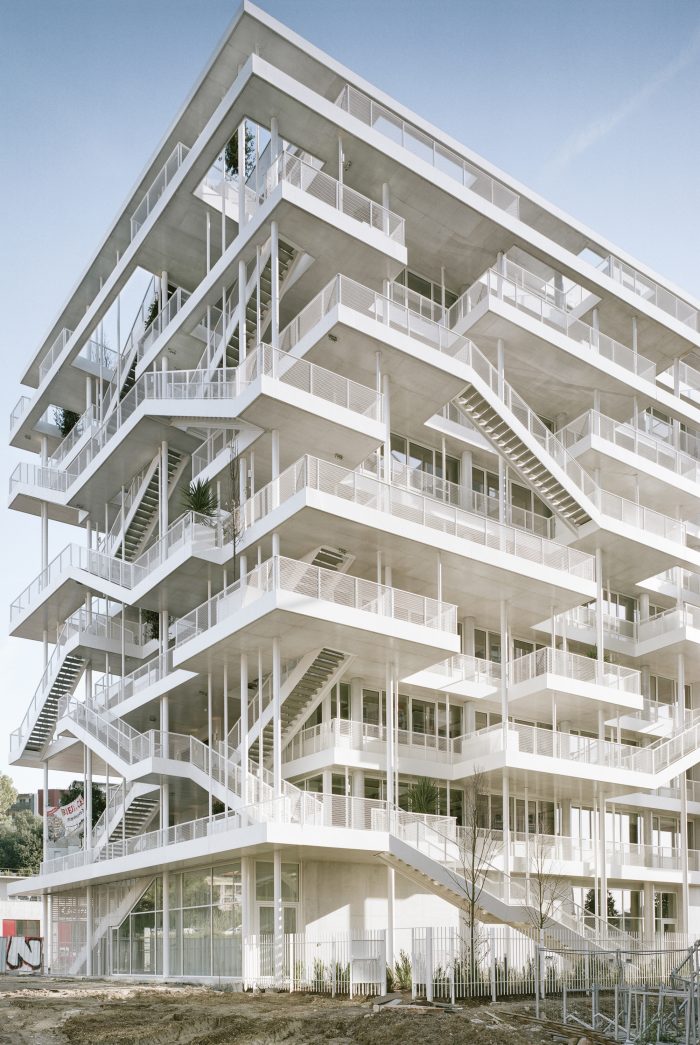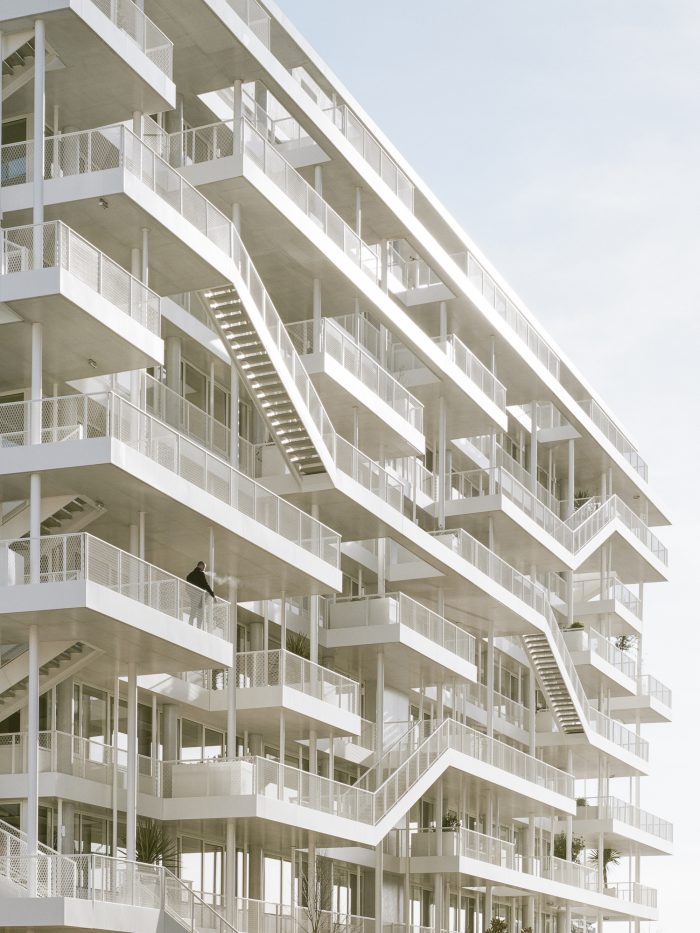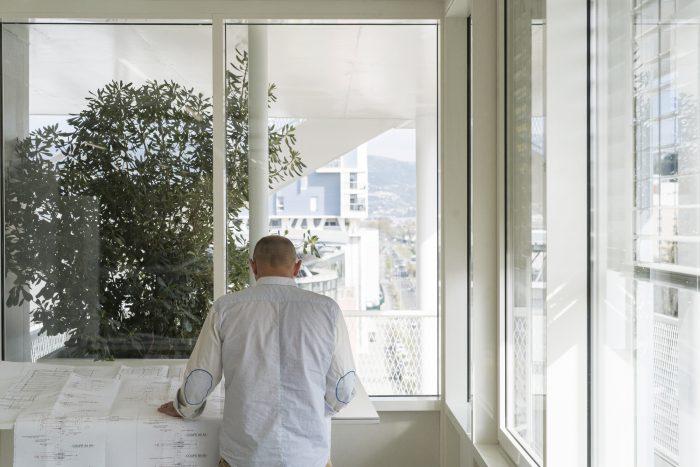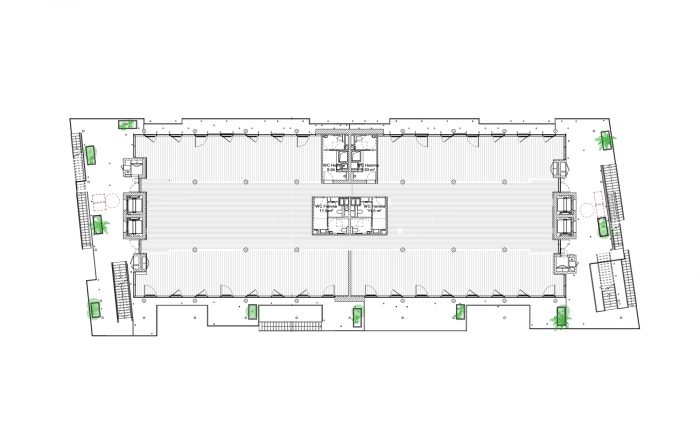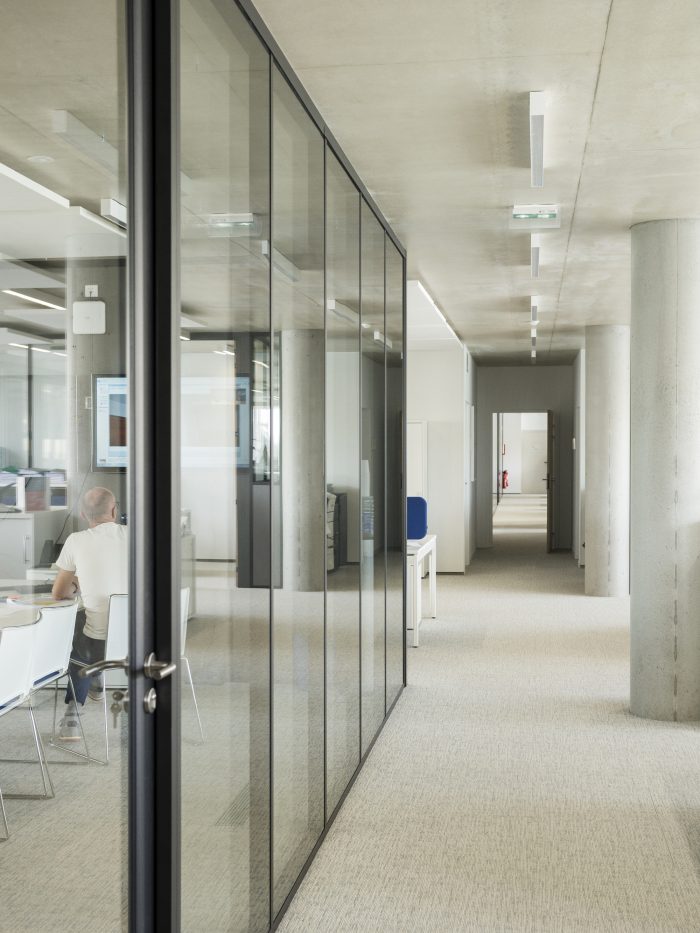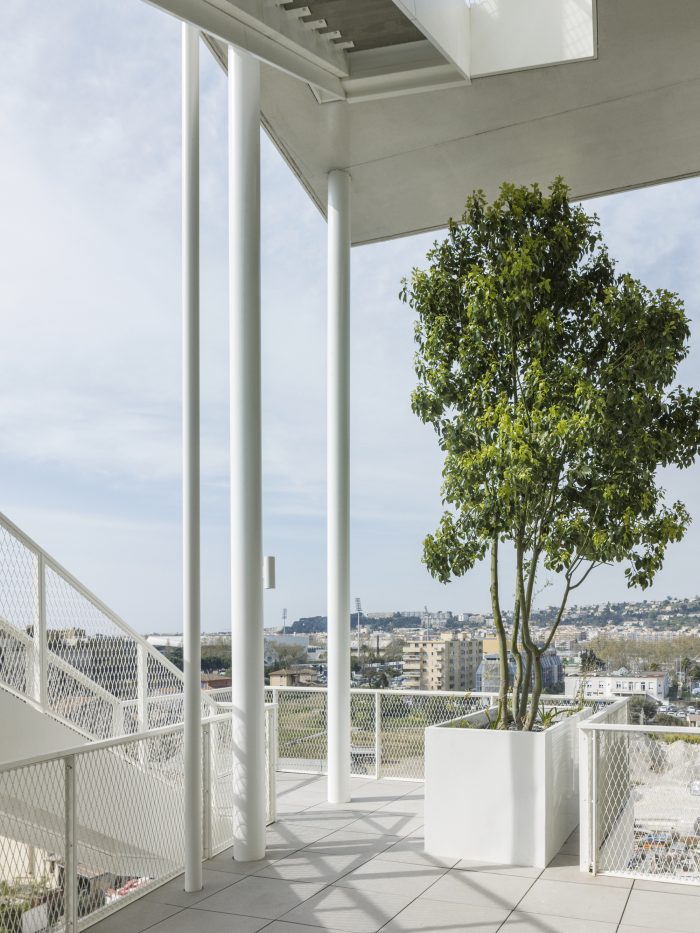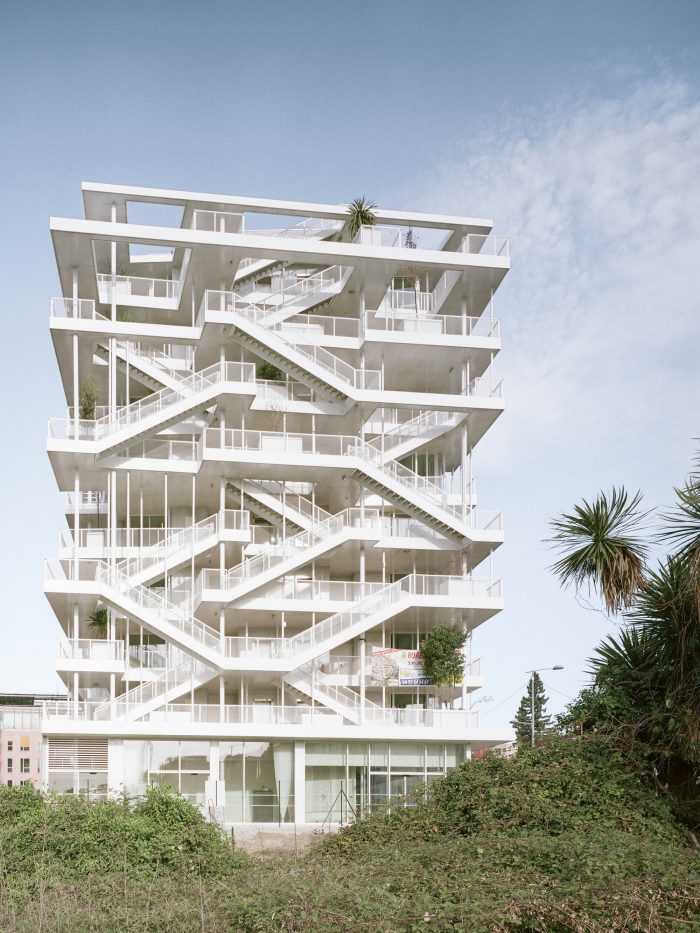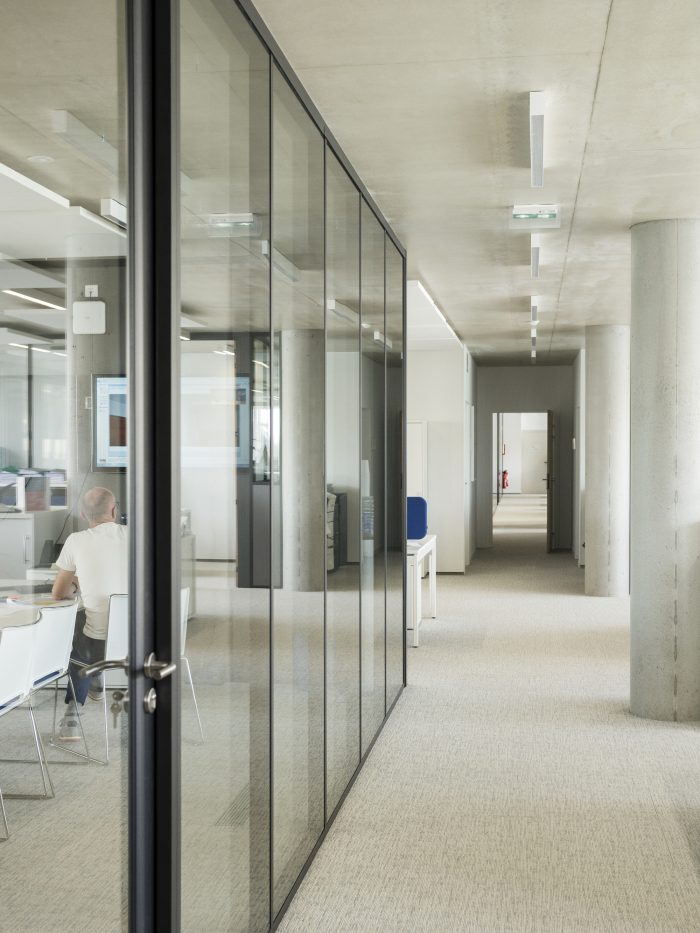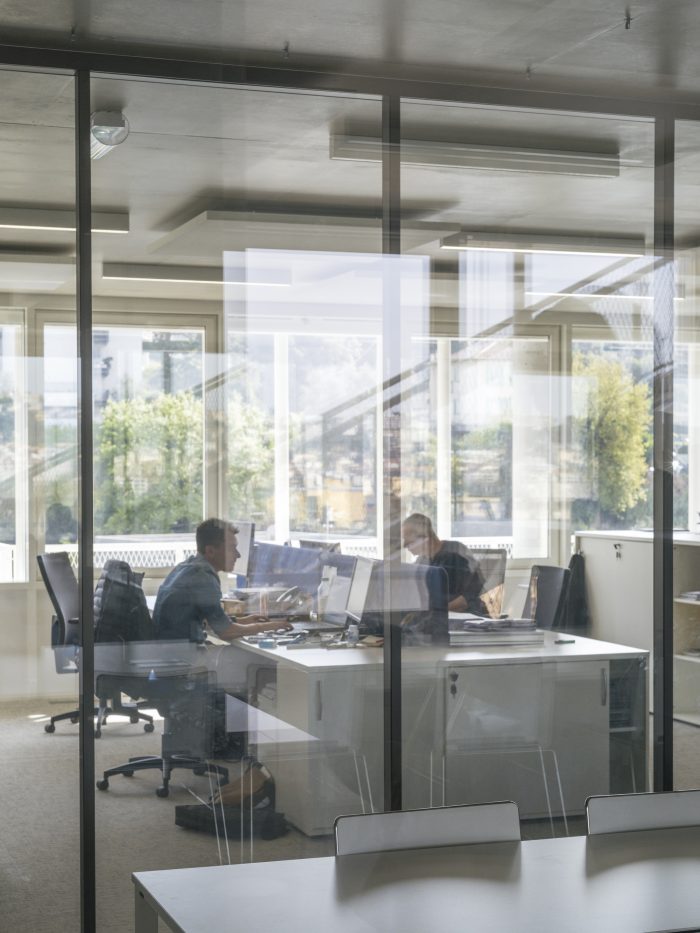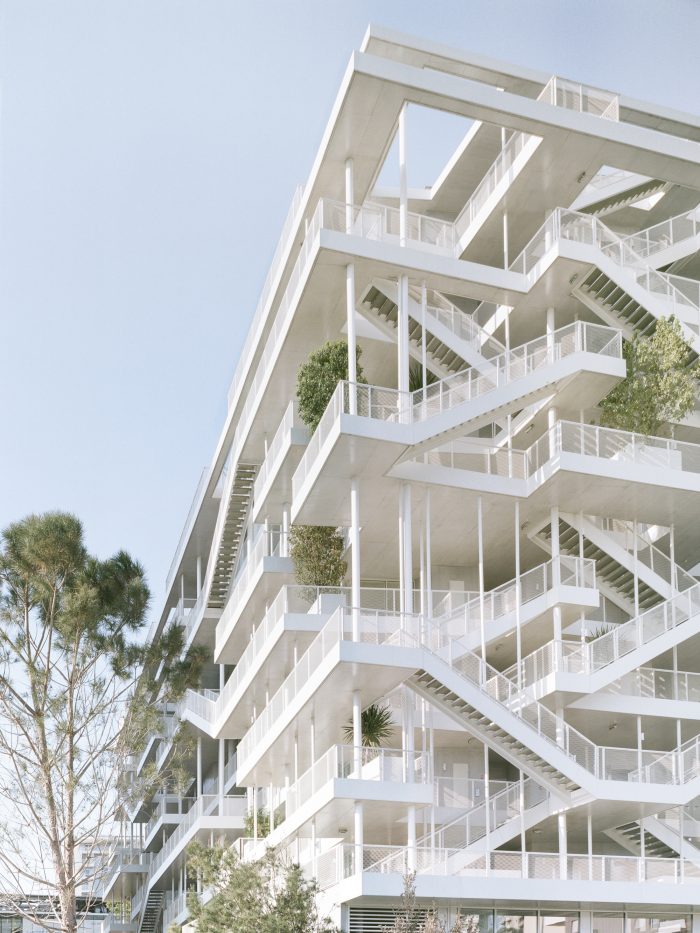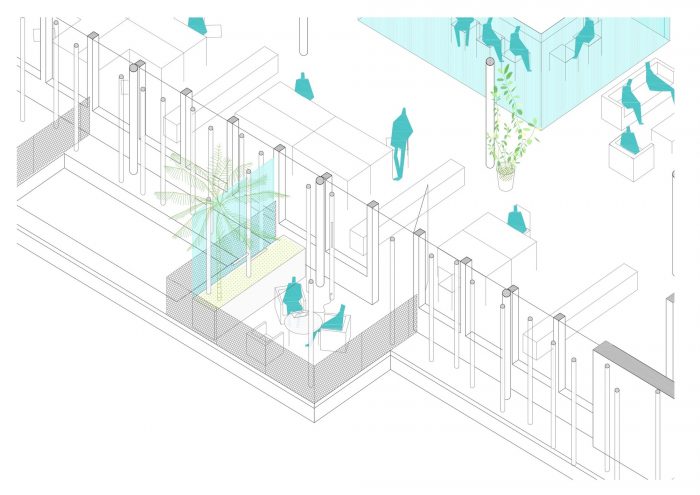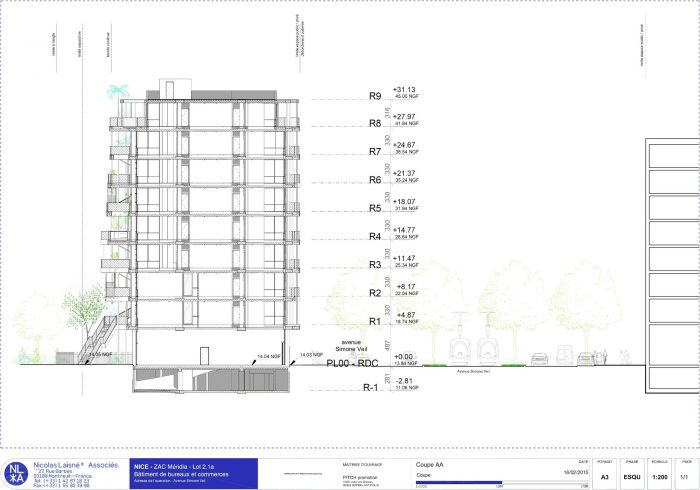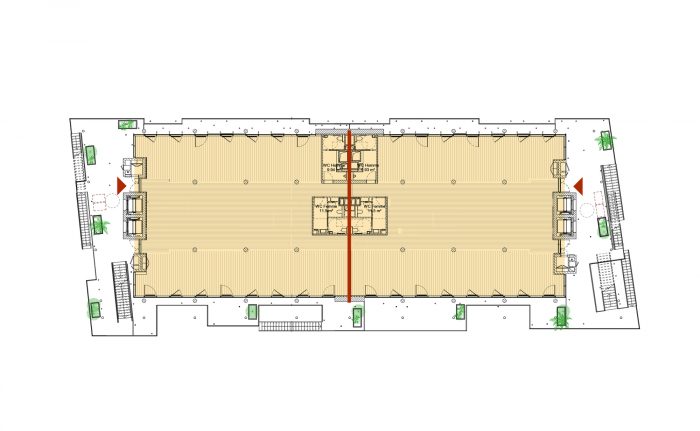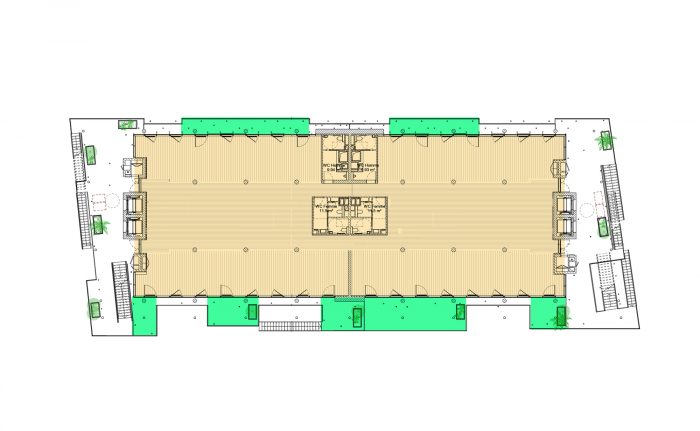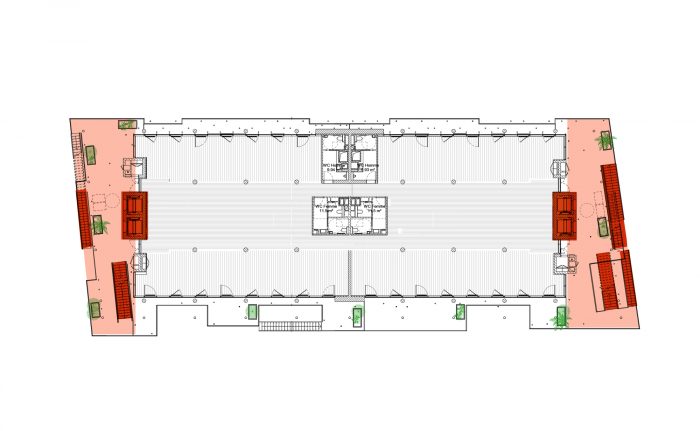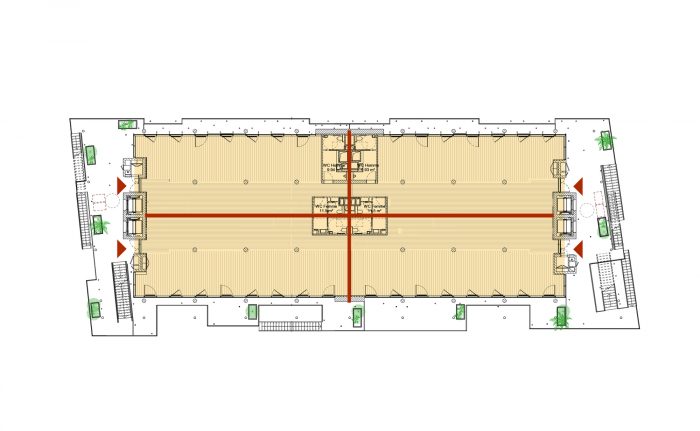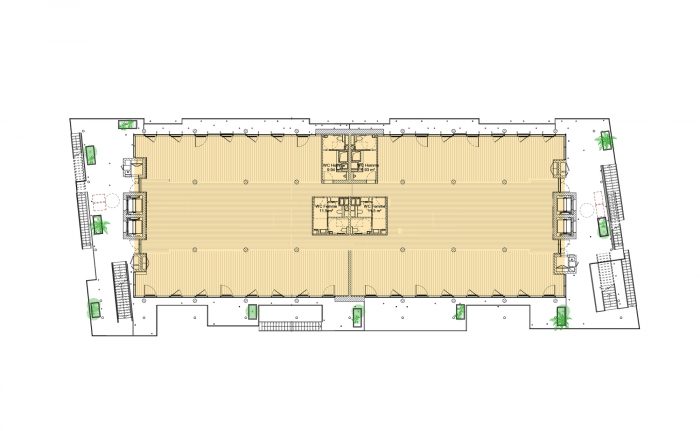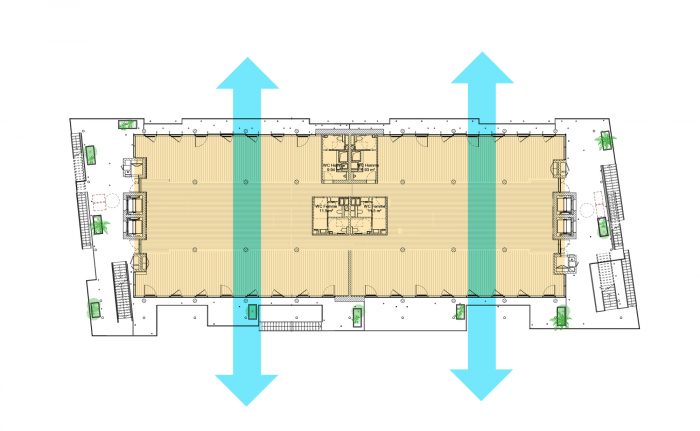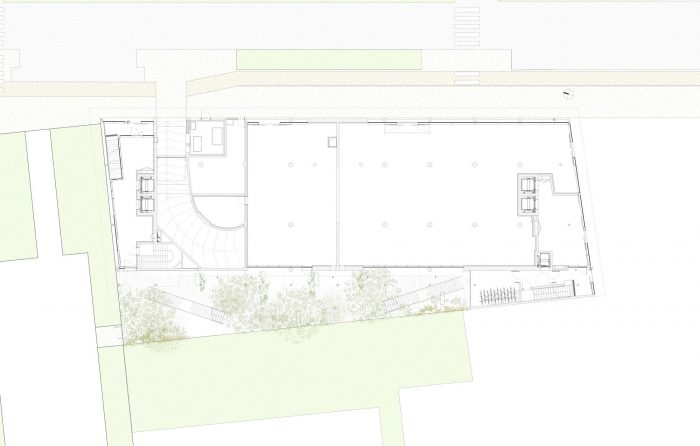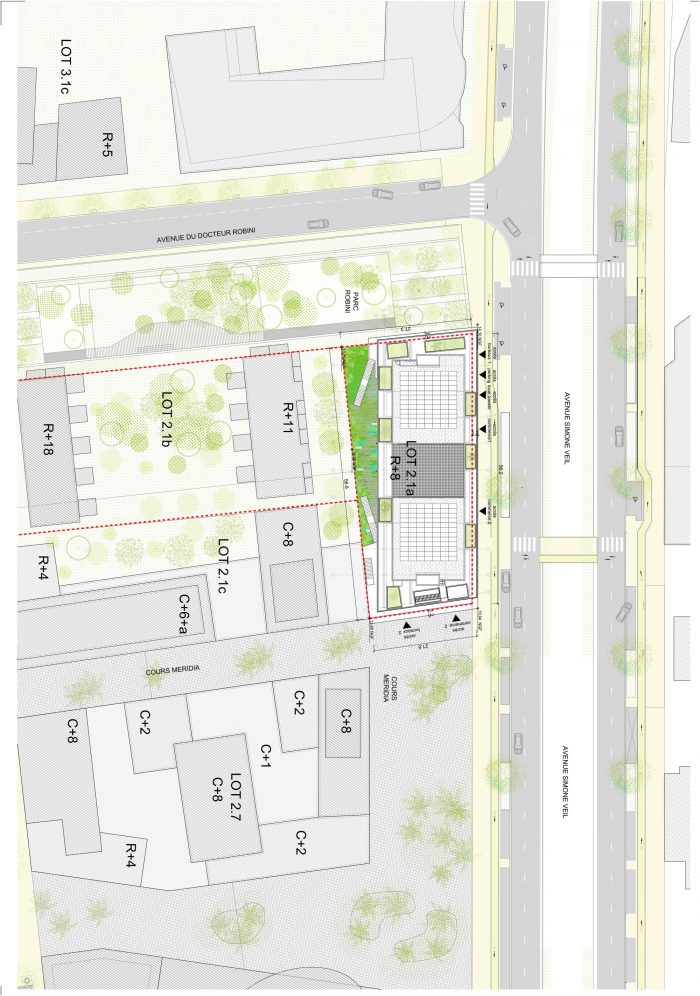尼斯Méridia城市技术中心现在是Anis的所在地,这是一座由建筑师Dimitri Roussel和Nicolas Laisné设计的带露台的办公大楼。该建筑反映了企业对户外空间和绿化的兴趣,从提供工作空间的角度来看,它是创新的,同时也是致力于环保的。
The Nice Méridia urban technology hub is now home to Anis, an office building with terraces designed by the architects Dimitri Roussel and Nicolas Laisné. Reflecting the interest shown by companies in outdoor spaces and greenery, the structure is innovative from the point of view of the working spaces that it offers, but also the committed environmental approach.
未来的办公室.在日益灵活的工作安排和充满活力的公司的背景下,Nicolas Laisné和Dimitri Roussel的设计由三个指导原则驱动:创造有吸引力的工作空间,形成会议场所和提供灵活的使用。从地中海建筑的角度处理这些挑战,使他们提出了户外工作空间的建议。该建筑坐落在绿色空间的中心。梯田有花园,但它们也是相连的,可以转变为工作站或非正式会议室。透明的外墙让光线进入,而露台的悬挑则提供了遮挡阳光的保护,创造了一个气候控制的环境。
The offices of the future.Against the backdrop of increasingly flexible working arrangements and dynamic companies, Nicolas Laisné and Dimitri Roussel’s design was driven by three guiding principles: creating appealing working spaces, forming meeting places and offering flexible use. Handling these challenges from the point of view of Mediterranean architecture led them to suggest outdoor working spaces. The building is nestled in the heart of a green space. The terraces have gardens, but they are also connected to transform into a workstation or an informal meeting room. The transparent façades allow the light to enter, whilst the terrace overhangs provide protection from the sun, creating a climate-controlled environment.
透明度和开放性.另一个重要的项目决定:将所有的走廊和通道移到室外。这些走廊和通道通常位于传统建筑的中心,因此将它们移到室外可以释放出整个楼层。由于取消了通常的假天花板,所有的技术元素都在楼层内管理,空间感被放大了。
Transparency and openness.Another significant project decision: moving all the corridors and passageways outside. They are usually located in the centre of traditional buildings, so moving them freed up entire floors. The feeling of space is amplified by the removal of the usual false ceilings, with all technical elements managed within the floor.
这些创新不仅为居住者在选择布局时提供了最大的自由度,而且走廊和通道也使立面更加生动,非常适合在室外进行非正式讨论,俯瞰花园。
These innovations offer not only maximum freedom for occupants in their chosen layout, but the corridors and passageways also liven up the façades and are ideally suited for informal discussions outside, overlooking a garden.
生态学,与可持续发展的设计策略.设计和创造持久的建筑,保持相关的,适应性强,不受限制或基于现有方案的定义是一个重要的生态友好的姿态。更具体地说,Anis Dimitri Roussel和Nicolas Laisné希望与标准的企业房地产设计方法保持距离,即玻璃 “幕墙”,这通常是能源密集型项目的同义词。一个明确的环保身份。通过这个项目,Laisné Roussel环境建筑树立了一个榜样,因为它体现了可持续发展的设计策略。建筑设计根据天气的变化进行了优化:根据朝向设置悬挑,冬季利用太阳能减少供暖能耗,夏季提供防晒保护以改善工作条件。走廊和通道区域被用来创造一个气候控制的环境,并最大限度地利用自然通风。
Ecology, with a sustainable design strategy.Designing and creating long-lasting buildings, which remain relevant, adapt and are not restricted or defined based on an existing programme is a significant eco-friendly gesture. More specifically, with Anis Dimitri Roussel and Nicolas Laisné wanted to distance themselves from the standard corporate real estate design approach, that of the glass “curtain wall”, which is often synonymous with energy-intensive projects. A clear environmental identity. With this project, the Laisné Roussel environmental architecture sets an example, as it reflects a sustainable design strategy. The building design is optimised to respond to the weather: creating overhangs based on orientation, making use of solar energy in winter to reduce heating energy consumption, and providing protection from the sun in the summer to improve working conditions. The corridor and passageway areas are used to create a climate-controlled environment and maximise natural ventilation.
建筑师:DREAM, Nicolas Laisné
面积:6962 m²
年份:2018年
摄影:Cyrille Weiner
城市: 尼斯
国家:法国
Architects: DREAM, Nicolas Laisné
Area: 6962 m²
Year: 2018
Photographs: Cyrille Weiner
City: NICE
Country: France

